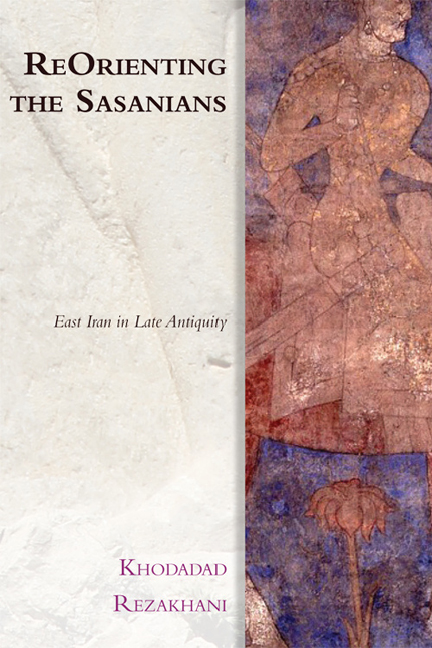Book contents
- Frontmatter
- Contents
- List of Illustrations
- Acknowledgements
- Series Editor's Preface
- Maps
- Preface
- Introduction
- 1 The Sasanians and the Sistanis
- 2 The Kushans and the Sasanians
- 3 The Kushano-Sasanians in East Iran
- 4 The Iranian Huns and the Kidarites
- 5 The Alkhans in the Southern Hindu Kush
- 6 The Hephthalite ‘Empire’ and its Successors
- 7 Sogdiana in the Kidarite and Hephthalite Periods
- 8 The Nēzak and Turk Periods
- 9 Tokharistan and Sogdiana in the Late Sasanian Period
- 10 General Conclusions and Postscript
- 11 Epilogue and Excursus on the Shahnameh
- Bibliography
- Index
4 - The Iranian Huns and the Kidarites
Published online by Cambridge University Press: 07 December 2017
- Frontmatter
- Contents
- List of Illustrations
- Acknowledgements
- Series Editor's Preface
- Maps
- Preface
- Introduction
- 1 The Sasanians and the Sistanis
- 2 The Kushans and the Sasanians
- 3 The Kushano-Sasanians in East Iran
- 4 The Iranian Huns and the Kidarites
- 5 The Alkhans in the Southern Hindu Kush
- 6 The Hephthalite ‘Empire’ and its Successors
- 7 Sogdiana in the Kidarite and Hephthalite Periods
- 8 The Nēzak and Turk Periods
- 9 Tokharistan and Sogdiana in the Late Sasanian Period
- 10 General Conclusions and Postscript
- 11 Epilogue and Excursus on the Shahnameh
- Bibliography
- Index
Summary
INTRODUCTION
The fall of the Kushano-Sasanians probably came as the result of nomadic invasions from the steppe and the imperial Sasanian response to this invasion. Characterised by the Chinese sources as an invasion of the Xiongnu, these nomads were called the Chionites by the Byzantine sources, possibly under the influence of Middle Persian Xyoan. Upon conquering Tokharistan from the Kushano- Sasanians, these Iranian Huns – as scholars call them – fought against and eventually allied themselves with the Sasanians. Their political power, taking advantage of the power vacuum left after the demise of the Kushano-Sasanians, was manifested in the foundation of the Kidarite Kingdom. Following the pattern established by the Kushans, these Kidarites also passed the Hindu Kush and conquered Gandhara. Like the Kushans, and the Kushano-Sasanians, they considered themselves to be the kings of the Kushan and issued coins that showed Kushan and Sasanian influences. Their century or so of power, from the late fourth to late fifth centuries, was a continuation of the order established by the Kushans.
ARRIVAL OF THE CHIONITES
The general invasion of nomadic tribes that came to overwhelm East Iran starting in the fourth century is attributed to tribal confederations originating from the Central Asian steppe. As usual, conflicting evidence about their origin, as well as their tribal designations, is given by the Chinese and non-Chinese sources. A prominent question concerns the circumstances of the invasion of East Iran by these tribes – the Chionites, Kidarites, Alkhans, and Hephthalites. Scholarly opinion differs as whether we are to consider them part of the same wave of invasions or whether the rise of each tribe to political power should be considered a new wave of movement from the steppe to Sogdiana and Tokharistan. From Chinese sources, it appears that different waves of invaders came via the same route, crossing the Syr Darya into Transoxiana, then invading Bactria/Tokharistan, and eventually crossing the Hindu Kush into the Kabul Valley and ultimately Gandhara.
- Type
- Chapter
- Information
- ReOrienting the SasaniansEast Iran in Late Antiquity, pp. 87 - 103Publisher: Edinburgh University PressPrint publication year: 2017

